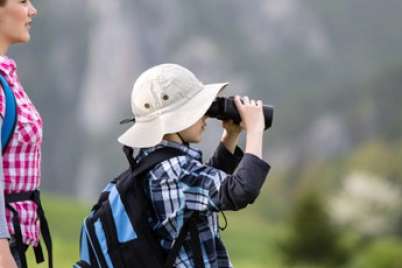
How integrating outdoor play into the school day benefits children
The children’s anxiety was greatly reduced, moods were better regulated, and focus had improved. Could it really be as simple as that? Turns out, through the power of play and love of learning in nature, it can.
As a teacher with Edmonton Catholic Schools’ pre-kindergarten program 100 Voices, I know teaching can be challenging. So I took the advice of my colleague and established a routine of daily outdoor play.
It’s changed my outlook as well. Children in my program get to run, laugh, and explore while developing their language and social skills. Through these experiences, they also develop their muscular strength and endurance.
Guest post by Jacqueline Koval
Jacqueline Koval is a pre-kindergarten teacher with Edmonton Catholic Schools’ 100 Voices program. She teaches three- to five-year-olds in Edmonton’s river valley, where they spend hours every day exploring the wonders of the outdoors.
Related read: 7 kid-friendly games to play on trail walks and nature hikes
Outdoor programming in our pre-kindergarten classrooms
At Edmonton Catholic Schools, physical literacy and outdoor programming are a priority for our 100 Voices children. Physical literacy encompasses physical, cognitive, social, and emotional wellness.
At our Genesis School, this is fostered in a unique way since our classrooms are in alternative spaces in partnership with the City of Edmonton. Our program, located in the heart of Edmonton’s river valley, provides a natural playground within an authentic learning environment.

My class started the school year spending an hour outside every day, then increased that to an hour and a half, then two hours. Just recently, we started spending the entire three hours of our program outside. On a typical day, we take our time meandering to our outdoor classroom, stopping to notice buds and leaves blossoming, balancing on fallen trees, running up and down hills, and climbing trees.
 Once we get to our outdoor space, we have lots of free play, which often involves hide and seek or chasing. We eat snacks and sing songs, as well as read books and draw pictures—usually of things in our environment, such as woodpeckers or leaves. Being outside brings our learning to life.
Once we get to our outdoor space, we have lots of free play, which often involves hide and seek or chasing. We eat snacks and sing songs, as well as read books and draw pictures—usually of things in our environment, such as woodpeckers or leaves. Being outside brings our learning to life.
With a focus on outdoor programming, parents can see that their children are more aware of their surroundings. For example, some parents have observed that their kids are now more likely to identify areas where the snow has melted, or they hear and recognize the songs of a chickadee. Parents also notice that fresh air calms their children and being outside makes them happy.
“They get dirty and try new things like climbing trees, balancing on rocks, jumping in puddles, blowing bubbles, and riding bikes.”
-A parent explains the benefits
A shift in values
To embrace outdoor programming as an educator, you must be open-minded. Recently, another colleague of mine with more than 20 years’ experience told me she’s never looked back since spending more time outside with her class.
“Feeling the sun on my face, even in -20C, is beautiful,” she said, adding that she feels calmer as well. She explained how finding a fallen tree was a wonderful learning opportunity: the children balanced, climbed, and sometimes they even got stuck, which gave them an excellent chance to try problem-solving. This teacher believes outdoor programming promotes the development of the whole child.
So, let’s get outside and get moving! Who knows what could happen?






Love it! Thanks for an efficient and effective read that I can pass on to my colleagues to help try to meet our comprehensive school health goal of more time outside to improve mental health!
Jackie, thank you so much for this article! I love how you are able to explain the benefits, wonders, and joys of being outside for extended periods of time. I plan to use this article as an example of what one teacher can do when passionate about supporting children’s learning through outside, nature-based play.
Wonderful reading!! Well done Jackie for highlighting this valuable lesson.